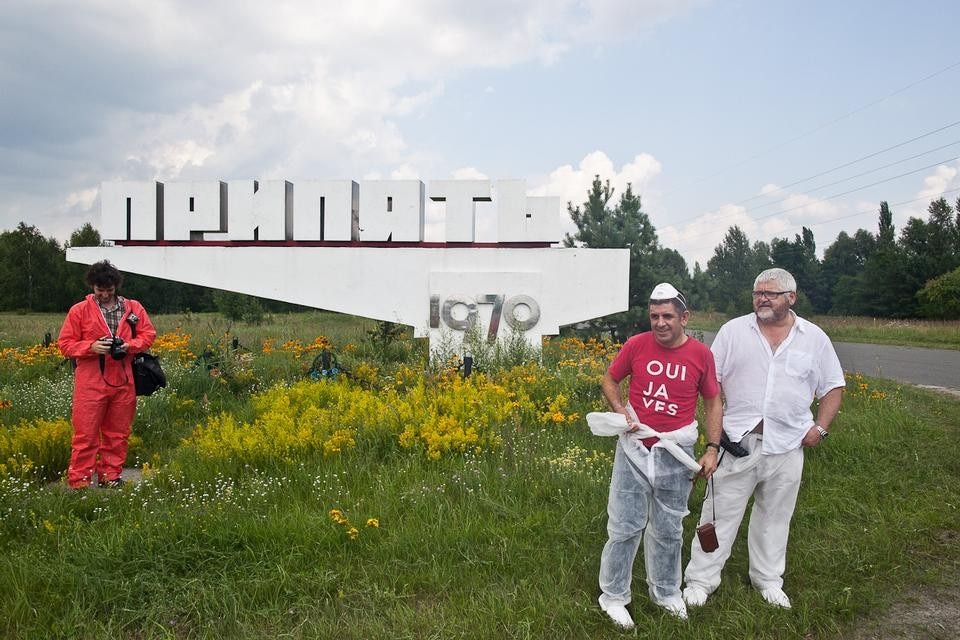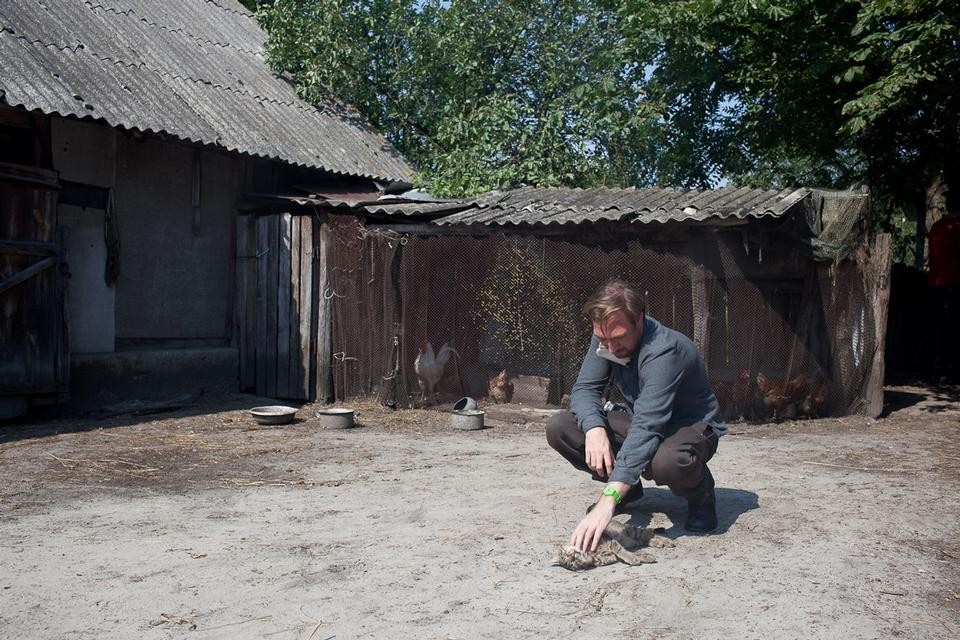A gamble with the invisible
3…2…1 …
The revolution is on its way, and we are the Unknown Fields Division's explorers and creative soldiers!
We collect, speculate, narrate, perform, record and experiment; we elaborate archives for possible futures. Nomads hunting for the last whale in the sea, we seek the uranium residue, the radioactive dust dressed up in our red laboratory suits. Forty-two members from the US, Netherlands, Greece, Italy, Canada, Germany, France, Portugal and more are trained to lose themselves in the Zone, to seek the imaginaries of disaster.
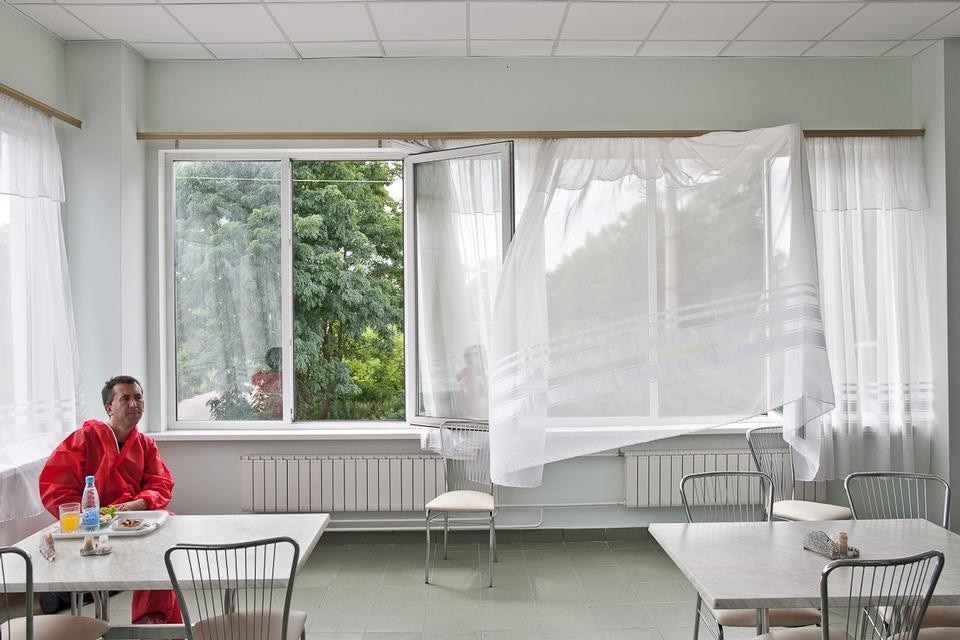
We are the explorators of the dead zone!
At least we think we are... but has this tableaux all been set up just for us?
We are looking at a destroyed doll laying on the ground outside the bus, and Christmas ornaments somehow still on the trees left by inhabitants of Pripyat during their mass-expulsion in May 1986, following the explosion of Chernobyl's Reactor 4.
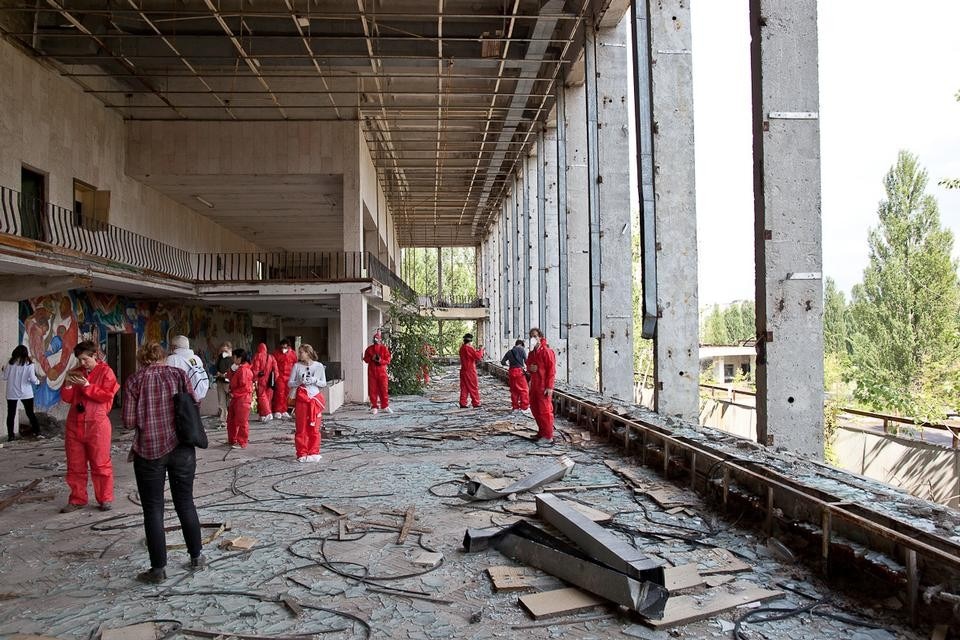
We stop and feed catfish just outside the sarcophagus that now covers the deadly nuclear core that radiates still. This gigantic nuclear shelter was made during the emergency following the wide dispersion of radioactive elements. Here the radioactive levels are higher and we can only take pictures "of the front of the sarcophagus, not from the right, not from the left" our guide Maxim tells us; he was born in Chernobyl and runs this tour. He tells us that he is 'fine, [his] health is checked every year by the radioactive unit of Chernobyl's hospital,' and that with him we are 'in safe hands.' Maxim smokes a lot on the zone, so we all start to relax…
The decisions made then at Chernobyl were experimental decisions. Nobody really knew what to do. He thinks that Chernobyl should become a place for training for radiation emergencies, or perhaps use it as a national park.
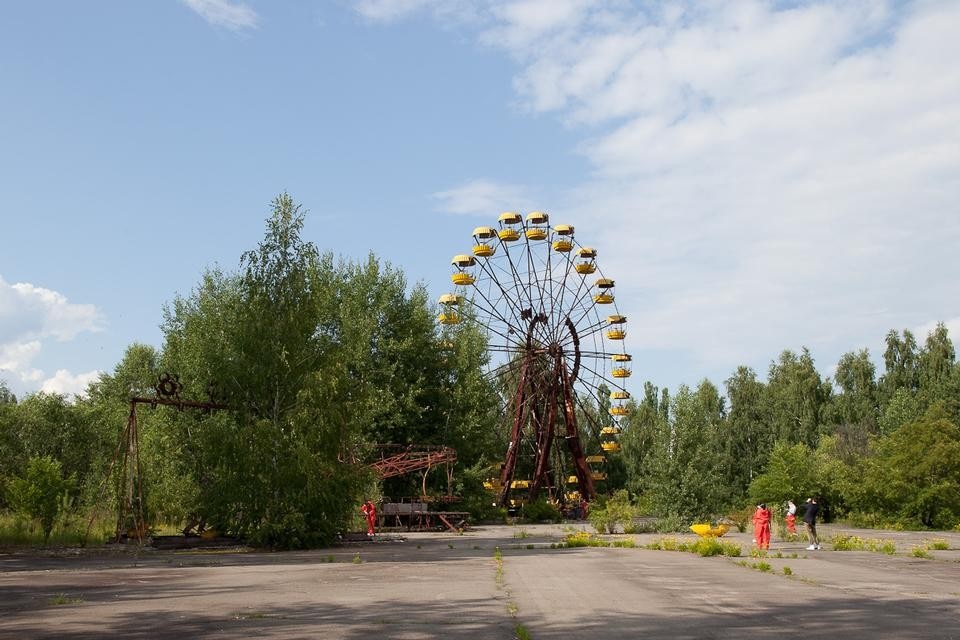
The day before we enter the Exclusion Zone, we meet with Sergei Mirnyi, who started the tours in the Zone. He was a 'liquidator' in charge of 'liquidating the consequences' of Chernobyl. He and his crew were responsible for cleaning the Zone two months after the accident; he has a very optimistic view of the zone that I found rather shocking…Trained with his military unit by the Soviet Union for the possible World War III, he was officer of radiation chemical and bacteriological surveillance when the Chernobyl disaster happened.
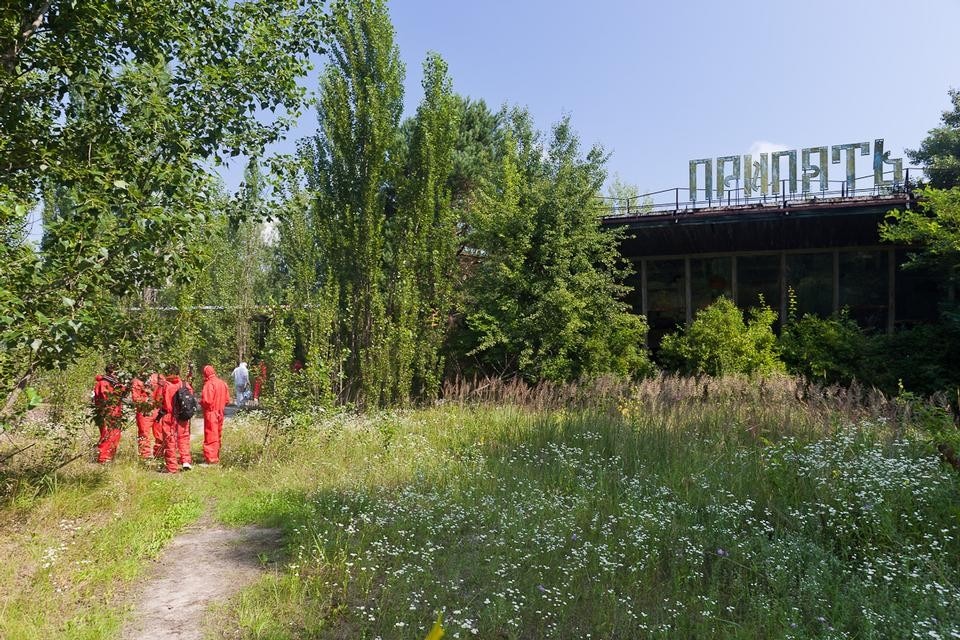
Sergei explained to us how the Soviet Union managed to empty the whole city of Pripyat (population 50,000) in 1000 buses. He mentioned that the decisions made then at Chernobyl were experimental decisions. Nobody really knew what to do. He thinks that Chernobyl should become a place for training for radiation emergencies, or perhaps use it as a national park. At the moment the zone is under the surveillance of what the Ukrainian government call Ministry of Emergency, his access is now strictly restricted as the Chernobyl site has long been 'under investigation'…
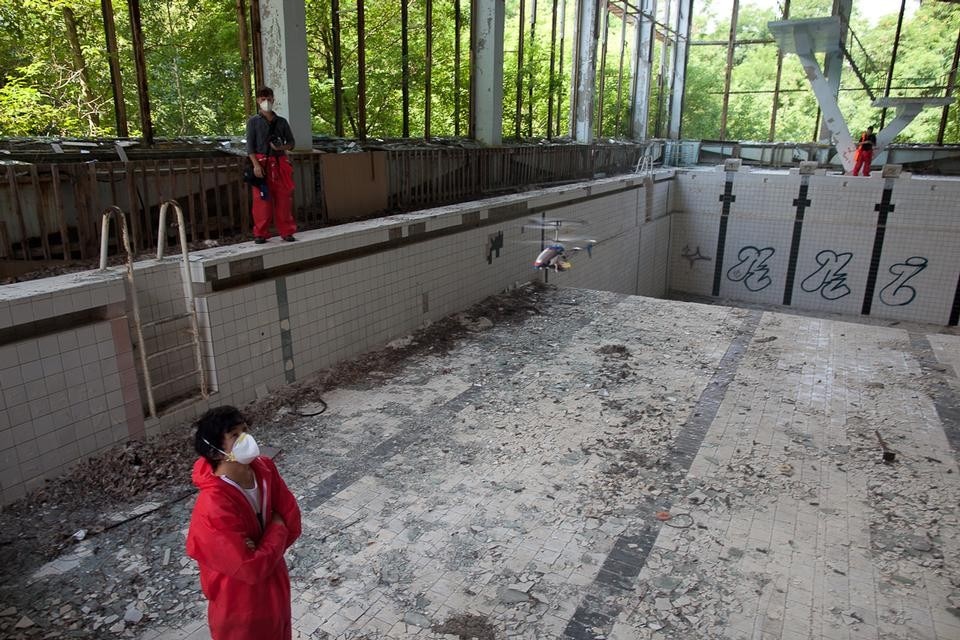
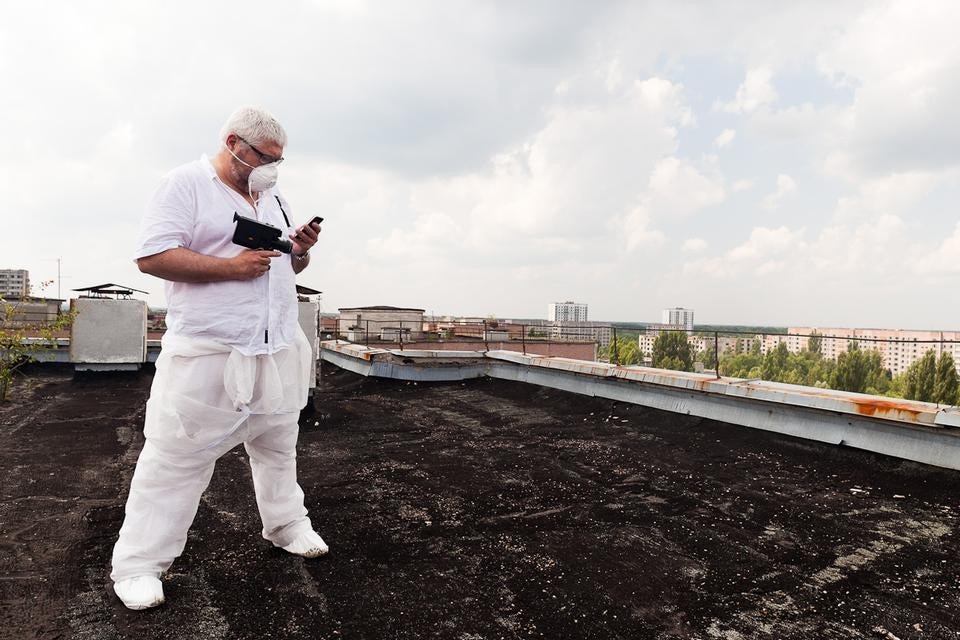
The visit to the Zone developed as such:
DAY 1:
-Check point 1: Passport, go through cloths control: 22min 53
The Exclusion Zone is of a diameter of 30 Km around the power plant.
Briefing with our guide in the Hotel of Chernobyl: 14min 58.
with signature of agreement to be signed by the participants.
'During the visit to the exclusion zone it is totally prohibited to:
-Carry any kind of weapons
-Drink liquors or take drugs
-Have meal and smoke in open air
-Touch any structures or vegetation
-Seat or place photo equipment on the ground
-Take any items outside of the Zone
-Violate the dress code (open type shoes, short trousers, skirts)
-Stay in the zone without the officer responsible for the envoy'
-Lunch at the canteen of Chernobyl plant with Novarka workers building, the arch-shaped New Safe Confinement to replace the existing sarcophagus
-Visit of the theatre, theme park in Pripyat.
-Dinner in Chernobyl's Hotel (inside the exclusion zone)
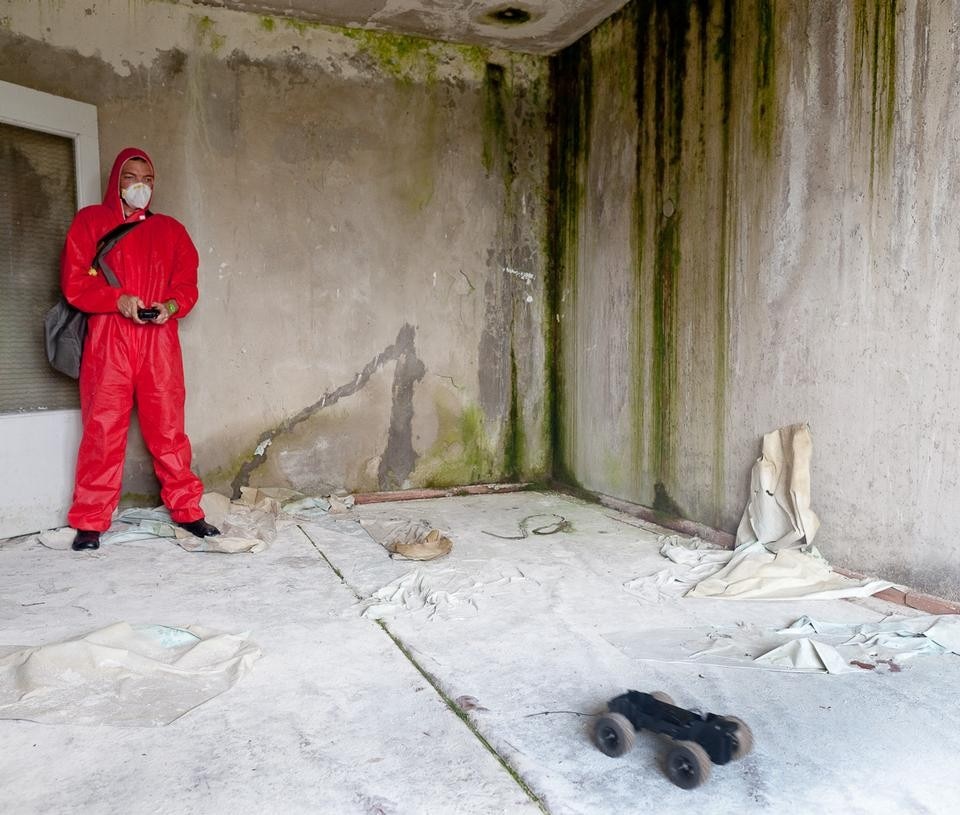
Visit to the Pripyat school, swimming pool, etc.,
Visit to the sarcophagus
Feeding the catfish in front of the sarcophagi
Visit to memorial building
Check point, check radioactivity level
Out of the Zone by 5 pm.
Now we are off to the Aral sea on board on a night Kazakhstan train, for an experience of waiting….Will the Aral Sea come back to touch our feet?
For more information about Unknown Fields Division, see www.unknownfieldsdivision.com.
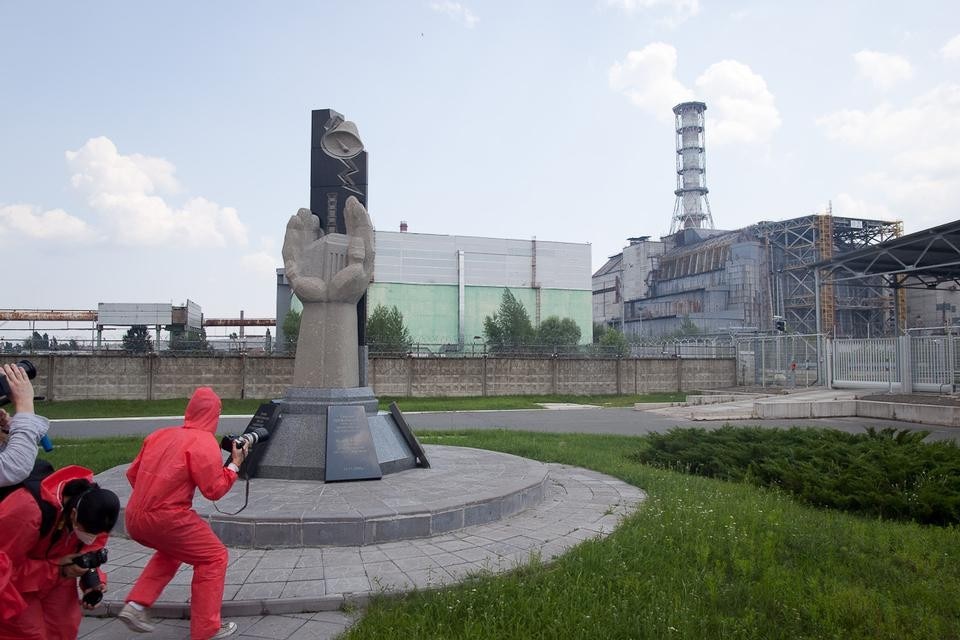
Liam Young
Kate Davies
Collaborators:
Chris Hatherill, Clive Van Heerden, Emmanuel Verycuse, Eric De Haas, Jack Mama, Jonathan Gales, Michael Madsen, Regina Peldszus, Stephen Smith, Vincent Fournier, Will Wiles, Nelly Ben-Hayoun
Participants:
Adam Molinski, Aldongar Cherdabayev, Andrea Bagnato, Andreas Makas, Breanna Carlson, Bryan Allen, Charles Irby, Colleen Tuite, Demetris Constantinides, Ellen Hartman, Greg Barton, Ian Quate, Joan Tom, Joana Rodrigues, Judson Hornfeck, Madeeha Merchant, Mond Qu, Neil Berrett, Nicolas Moore, Nicole Koltick, Oliviu Lugojan-Ghenciu, Pete Collard, Samantha Lee, Svetlana Demchenko, Vere Van Gool, William Dunaway, Yuri Yoshioka, Kassymkhan Ulykbanov, Arjen Oosterman
All photographs © Neil Berrett 2011.
